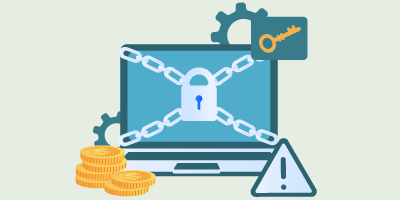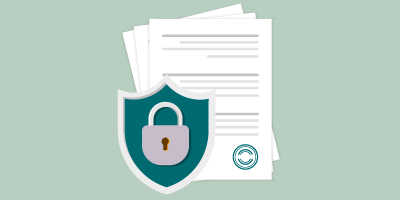Banks and other financial organizations are prime targets for cyber criminals. The rise of internet banking, mobile applications, and instant payments has further increased the industry’s attack vector. As of 2020, financial services organizations saw a 200% increase in frequency of cyberattacks. Further, since the pandemic, the average cost of a data breach in the financial services sector exceeded 5 million, which surpasses the average cost experienced in other sectors. These trends underscore the importance of strong and consistent cybersecurity to help the financial sector stay ahead of evolving cyber risks
In this blog post and video, we’ll share some common cyber threats in banking and security solutions to tackle these challenges.
Article Topics:
- Why is cybersecurity important in banking?
- How do cyber criminals get access to financial information?
- Tips to improve cybersecurity in banking
Why is cybersecurity important in banking?
Banks are an attractive target for cyber criminals because they store and handle a lot of high-value personal information such as social security numbers, email addresses, home addresses, income information, and phone numbers. Given the sensitive nature of this information, it’s essential for banks and financial services institutions to implement adequate and effective cybersecurity controls to safeguard customer data.
A security breach can cost a bank both its financial and reputational standing. When faced with a cyberattack that compromises critical data or customer accounts, banks and financial organizations risk losing clients as well as significant resources trying to recover lost or stolen data.
Further, the financial organizations operate in a highly regulated industry and are the focus of several laws such as the Gramm-Leach-Bliley Act (GLBA). Banks and other financial organizations that fail to protect customer information in compliance with these laws and requirements face heavy penalties. Given these high stakes, cybersecurity should be top of mind for the financial sector.
How do cyber criminals get access to financial information?
Some common tactics cyber criminals use to target banks and the financial services sector include:
Malware attacks: The rise in digital banking has further increased the risk of malware attacks that compromise a financial organization’s networks and devices. If these systems are not properly secured, hackers can breach networks using malware and access sensitive customer information.
Spoofing: Spoofing is another growing cybersecurity risk for the financial sector. Hackers spoof a bank’s URL, email, or phone number to trick customers into sharing personal information or account login credentials that can be used for fraudulent purposes.
Unencrypted data: Unencrypted data is simply unprotected data. Hackers that gain access to unencrypted customer data can almost immediately use this stolen information for fraudulent activities, causing serious damage to a financial organization’s reputation and business.
Social engineering: Social engineering attacks, such as phishing, are common cybersecurity threats that target financial organizations. Hackers manipulate employees or customers into revealing sensitive information or providing unauthorized access to data. Read more about social engineering.
Data manipulation: This is a new and rising cyber threat where hackers may change payment details, bank account information, websites, and more to carry out an under-the-radar security breach for their financial benefit.
Tips to improve cybersecurity in banking
To safeguard information and prevent monetary or reputational losses, banks and financial institutions should develop a strong cybersecurity posture with a focus on risk mitigation and data protection.
Financial organizations generally use the following tactics to combat cyber threats:
Cybersecurity risk assessments: By conducting routine risk assessments, banks and financial organizations can proactively find and close gaps in their security infrastructure.
Employee security awareness training: Employees are generally the first line of defense against a security breach. Consistent cybersecurity awareness training ensures employees are educated about security risks, their role in reporting and mitigating a suspected breach, and appropriate measures to secure customer data.
Cyber insurance: Many banks and financial organizations take on cyber insurance to minimize the losses incurred from a cyberattack.
Besides these measures, financial organizations should also follow cybersecurity best practices, including employing multi-factor authentication, adopting password management, actively monitoring systems and accounts, and making sure to always access accounts using a secure internet connection.
Does your Financial Organization need assistance with Cybersecurity?
Does your financial organization need assistance with implementing cybersecurity policies and procedures? GraVoc’s information security services help banks and other financial organizations improve their overall security posture by reducing risk exposure, ensuring compliance with industry regulations, and aligning with information security standards and best practices. Click below to learn more!
Related articles
Change Healthcare Attack: Ransomware Protection Measures for Healthcare Organizations
In light of the Change Healthcare attack, we explore why hackers target healthcare and how healthcare can defend against ransomware.
GraVoc Recognized on CRN MSP 500 List for Second Year in a Row
For the second year in a row, GraVoc has been recognized on the CRN® MSP 500 list in the Pioneer 250 category!
PCI SAQ Types: Which SAQ is Right for Your Business?
In this blog post, we provide an overview of the SAQ types for PCI DSS v4.0 and how to select a PCI SAQ that’s right for your business.




